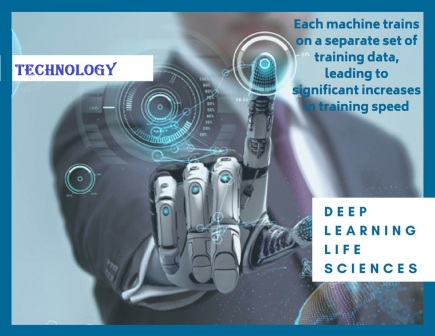The Cutting Edge of Medical Technology Content, Community & Collaboration
Digital technology has been driving change throughout the life science industry for years, however the sector is currently standing on the precipice of revolutionary development – some organizations have already taken the jump towards a more digital future.
Data collection and visualization for decision making to improve the overall performance of themanufacturing supply chain is a huge opportunity for the life science industry, however it’s not about being new – it’s about using proven solutions andapproaches to decision making to improve quality, reliability and reducing waste.
Businesses across the life science industry have been collecting data using large historian systems for years. Many currently have so much data arising from different sources it can be hard to focus on what is important. Right now, almost every device in a GMP manufacturing facility collects data and our clients have been completing projects to physically connect all these devices and systems for many years. The drive to physically connect the systems has come from many strategic objectives, including serialization.
All this excellent work has put the industry in a great position to use the data it is currently collecting in the best possible way.Although the robotics and automotive industries may be in a better position to use Artificial Intelligence (AI) and self-learning systems to improve manufacturing in efforts linked to Industry 4.0 – the life science industry has been using data and evidence to improve its manufacturing for nearly forty years.
 https://compliance4all14.files.wordpress.com/2018/07/deep_learning_life_sciences_by_clusterone01-dcf027i.jpg?w=872&h=674 872w, https://compliance4all14.files.wordpress.com/2018/07/deep_learning_... 150w, https://compliance4all14.files.wordpress.com/2018/07/deep_learning_... 300w, https://compliance4all14.files.wordpress.com/2018/07/deep_learning_... 768w" sizes="(max-width: 436px) 85vw, 436px" width="436" height="337" />
https://compliance4all14.files.wordpress.com/2018/07/deep_learning_life_sciences_by_clusterone01-dcf027i.jpg?w=872&h=674 872w, https://compliance4all14.files.wordpress.com/2018/07/deep_learning_... 150w, https://compliance4all14.files.wordpress.com/2018/07/deep_learning_... 300w, https://compliance4all14.files.wordpress.com/2018/07/deep_learning_... 768w" sizes="(max-width: 436px) 85vw, 436px" width="436" height="337" />
New tools and processes are emerging that can enable smart, decentralized production, with intelligent factories, integrated IT systems, the Internet of Things (IoT), and flexible, highly integrated manufacturing systems. In addition, future developments may mean that machine learning algorithms will be able to quickly adjust manufacturing lines and production scheduling. New developments will also pave the way for predictive maintenance and the opportunity to identify and correct issues before they happen.
Integrating with single use systems
The adoption of single-use technologies, such as single-use bioreactors and other unit operations is on the rise. Fueled by the growing pipeline of high potency and biological drugs and coinciding with the growth in personalized medicine and its inherent need for smaller batches, single-use technology will play an increasingly important role in the coming years.
Both upstream and downstream manufacturing processes benefit from single-use systems. During this manufacturing method the biopharma process system is disposed of after use as opposed to being cleaned, enabling quick set up while reducing cleaning and validation need.
Currently,the integration of manufacturing execution system (MES) solutions with start-to-finish technologies and single-use manufacturing platforms is helping the industry to deploy biopharmaceutical manufacturing with increased productivity and efficiency.The upshot is that manufacturers can significantly reduce the time-to-market for new products.
Single-use components are also an enabling technology for smaller scale production of biopharmaceuticals, including antibodies, proteins, vaccines and cell therapies, which would otherwise be much more difficult to produce. Increased productivity and efficiency are also a necessity when it comes to manufacturing smaller batches and a wider range of product. In this environment, single-use technology will naturally flourish as a simple, cost-effective solution.
Read more at http://bit.ly/2Lo1UqR
Views: 10
Comment
© 2025 Created by CC-Conrad Clyburn-MedForeSight.
Powered by
![]()
You need to be a member of MedTech I.Q. to add comments!
Join MedTech I.Q.